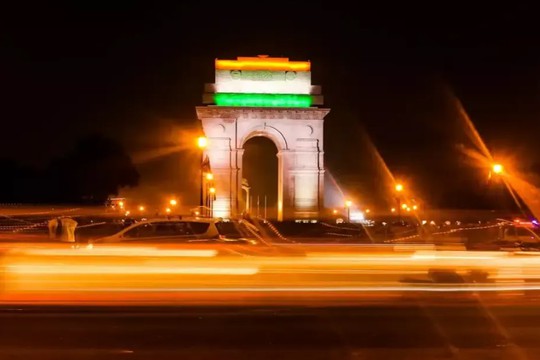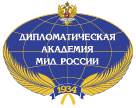The arch decorated with the national flowers of India.
Photo: indianarrative.com
If by 2047 India, with its population of around 1.7 billion by then, becomes a developed country (Viksit Bharat), it follows that it will have become a genuine “global power.” The question then is: what kind of “global power” will India be? – asks Kanwal Sibal, a distinguished Indian diplomat and former Foreign Secretary of India, who over a career spanning decades in the Indian Foreign Service, he served as Ambassador to Turkey, Egypt, France, and Russia.
The current understanding of the attributes of a global power is that of a country capable of exercising global influence based on its economic and military strength—a country that can influence the direction and substance of decisions on important issues facing the international community, either unilaterally or through groupings it dominates. It means a country that controls or can materially influence the workings and decisions of international political and financial institutions. It also implies that, through its grip on international communication flows, it can play a preponderant role in shaping global narratives. It can pursue double standards in its international discourse and dealings. In short, a global power exerts a great and often arbitrary weight in the functioning of the international system as it exists.
A Global Power pyramid
By this broad-based definition, the United States sits on top of the global power pyramid. The former colonial powers are still classified as great powers, if not global powers, because France and the UK are permanent members of the UN Security Council. Both are advanced industrial economies, technologically innovative, and economically prosperous despite mounting problems, and both possess strategic capabilities, including nuclear weapons. As part of the G7, they are able to enhance their influence within the global system.
China is now a global power in many ways — as the second-largest economy, the largest exporter, and the biggest manufacturing power. Through the Belt and Road Initiative (BRI), it has spread its presence across all continents, acquiring concomitant political influence. It has assiduously built dominance in many critical and emerging technologies. It is a permanent member of the UN Security Council and the second-largest contributor to the UN budget, which in turn has greatly enhanced its influence within the UN system. It is a nuclear power and has demonstrated its impressive military capabilities in recent parades in Beijing.
Russia is a reduced global power after the dismemberment of the Soviet Union. It remains a permanent member of the UN Security Council, possesses massive strategic military capabilities, and is a dominant country in Eurasia with influence in other geographies and forums as a counter to Western hegemony. As the largest country in the world and one endowed with vast natural resources, Russia retains the attributes of a global power.
India is an ancient civilisation. It has been a global power in civilisational terms. The spread of its civilisational influence in ancient times is visible across virtually the whole of Asia — China, Japan, Southeast Asia, Afghanistan, parts of Eurasia, and beyond. India’s connections with Greece and its flourishing trade with Rome are historical facts.
Indian Civilisation
Indian civilisation has not been tainted by colonialism, racism, human brutalities on so-called natives, genocide of indigenous peoples, slavery, wars in the name of religion, the will to dominate distant lands, hegemonic ambitions, looting of others’ wealth, or empire building abroad.
This is a precious legacy — entirely different from that of the global or great powers of the West. Their legacies persist and are expressed in their determination to retain hegemony through various means — military interventions, regime changes, sanctions, the imposition of supposedly superior values as a softer option, and control of narratives through media, think tanks, and NGO activism.
We have no such legacies that shape our outlook on the world or condition our national temperament or ethos. We accept and respect diversity. The philosophy of “live and let live” is ingrained in our thinking. The phrase Vasudhaiva Kutumbakam — “the world is one family” — is not an empty PR slogan for us. It is found in our ancient spiritual texts and represents the core value of seeing humanity and the planet as a single, unified entity. It was, therefore, quite appropriate that our G20 Presidency adopted the motto One Earth, One Family, One Future. This motto inherently encourages global solidarity, inclusive growth, and a harmonious, interconnected world.
India is frequently referred to as a rising power, but the usual power-based definitions do not fit us. We are the oldest surviving civilisation. We are now the most populous country in the world. We hold the destiny of almost one-fifth of humanity in our hands. We are bound to grow economically; our society will become more prosperous; we have strategic capabilities that allow us to defend ourselves; and we possess the human talent to develop a strong technological base.
We genuinely want peace — both around us and internationally. We do not covet anyone’s territory. We seek a greater say in the international system and in global governance, not for the sake of power, but to shape it more equitably and inclusively.
Our support for the Global South stems from a need to balance the interests of the developed and developing worlds. Our Neighbourhood First policy is intended to stabilise our region through equitable cooperation, even where challenges exist.
Our willingness to develop close ties with the US and Europe, while preserving our historic ties with Russia, is part of our cooperative worldview. This also explains why we engage with China even though we see it as our greatest strategic threat.
India’s attachment to strategic autonomy — or “multi-alignment” — reflects the basic philosophy of its international role: not taking sides, engaging with everyone, benefitting from cooperation with all, developing wide partnerships, and avoiding entanglement in the conflicts of others. India, in any case, is too large a country to be anyone’s appendage. We seek to be useful to everyone—and for others to see us as useful in advancing their legitimate interests. Strategic autonomy or multi-alignment is thus an investment in international peace and cooperation, not in promoting confrontation.
Multipolarity and its features
There is much talk of multipolarity. Do we see India as a “pole” in 2047? It all depends on how a pole is defined. Multipolarity can have three dimensions: political, economic, and security. Currently, the US is a pole in all three areas — as the largest economy, the issuer of the world’s prime reserve currency, the dominant actor in the international political system, and the state with unmatched global military reach through hundreds of bases worldwide.
China is an economic pole owing to the size of its economy, its manufacturing heft, its control of key critical technologies and raw materials, and its global economic presence through the BRI. It is also evolving into a political pole, with many developing countries backing it on issues where it is attacked by the West, including human rights. It has even made political inroads into Eastern Europe and the Balkans. However, it is not yet a security pole of significance — it lacks military bases and is constrained by the presence of US forces and alliances in the western Pacific.
Russia is a political, economic, and security pole largely confined to Eurasia and Central Asia, where it also competes with China. Many countries in the Global South are drawn toward Russia to hedge against Western hegemony, both bilaterally and within frameworks such as BRICS and the SCO.
India has no ambition to be a pole that fosters divisions or contributes to the fracturing of the global system into competing camps. Its conception of a pole is to foster cooperation, serve as a force for rebalancing the international system, introduce its own positive civilisational attributes and ideas into global functioning, and be the first go-to country for assistance to its neighbourhood in times of crisis.
read more in our Telegram-channel https://t.me/The_International_Affairs

 12:25 21.10.2025 •
12:25 21.10.2025 •























